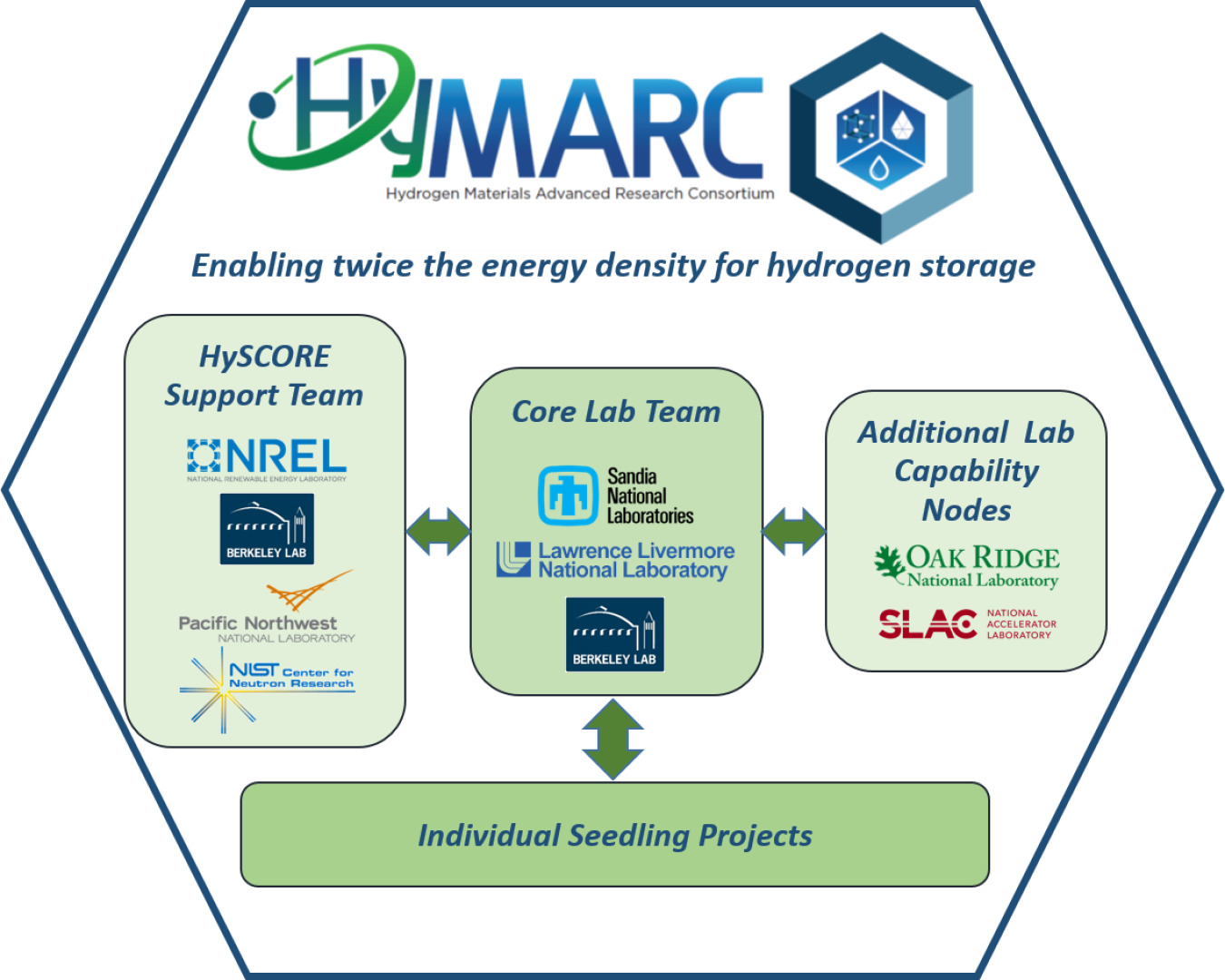
HyMARC consortia model
The Hydrogen Materials Advanced Research Consortium (HyMARC), composed of Sandia National Laboratories, National Renewable Energy Laboratory, Pacific Northwest National Laboratory, Lawrence Livermore National Laboratory, and Lawrence Berkeley National Laboratory, SLAC National Accelerator Laboratory, and National Institute of Standards and Technology, has been formed with the objective of addressing the scientific gaps blocking the advancement of solid-state storage materials.
The Hydrogen and Fuel Cell Technologies Office (HFTO) has established collaborative research consortia comprising a core team of U.S. Department of Energy (DOE) national laboratories and competitively selected individual projects. These core teams have the responsibility to carry out foundational research and provide support for the individual project's research efforts. As a collaborative effort, it is expected that the national laboratory core team will have substantial involvement with each individual project's research effort.
HyMARC research activities will focus on the thermodynamic and kinetic limitations of storage materials, including mass transport, surface chemistry, and processes at solid-solid interfaces. HyMARC is also part of the Energy Materials Network (EMN) aimed to solve industry’s toughest challenges through an innovative approach to materials research and development.
HyMARC will employ the large-scale parallel computing resources, innovative synthetic approaches, and high-resolution in-situ characterization tools available at the three laboratories to develop new capabilities that will accelerate development of storage materials that meet DOE targets. These capabilities will be made available to the hydrogen storage research community through future joint projects and collaborations. Examples include:
- Multi-physics software, methods, and models optimized for high-throughput material screening
- A sustainable, extensible database framework for measured and computed material properties
- Protocols for synthesizing storage materials in bulk and nanoscale formats
- Ultra-high-pressure synthesis and characterization facilities (≥700 bar)
- Characterization methods tailored for hydrogen storage and facile use of advanced X-ray probes.
View an in-depth description of the organization of the consortium, including its scientific activities.
View the standard non-disclosure agreement (NDA) required of all awardees selected to work with HyMARC.
Consortia Overview Webinars
The Hydrogen and Fuel Cell Technologies Office presented a consortia overview webinar on January 7, 2016. This webinar provided an overview of the organization of HyMARC and the Fuel Cell Consortium for Performance and Durability (FC-PAD), their planned scientific activities, and the role of individual projects selected to work with these consortia through the FY16 Funding Opportunity Announcement. Download the presentation slides from the webinar.
In addition to these efforts, DOE also supports a team of Federally Funded Research and Development Centers that have advanced characterization capabilities so that they are readily accessible to research teams supported by HFTO. This team includes researchers at the National Renewable Energy Laboratory, Pacific Northwest National Laboratory, Lawrence Berkeley National Laboratory, and National Institute of Standards and Technology Center for Neutron Research. Download a summary of these validation and unique measurement capabilities.
